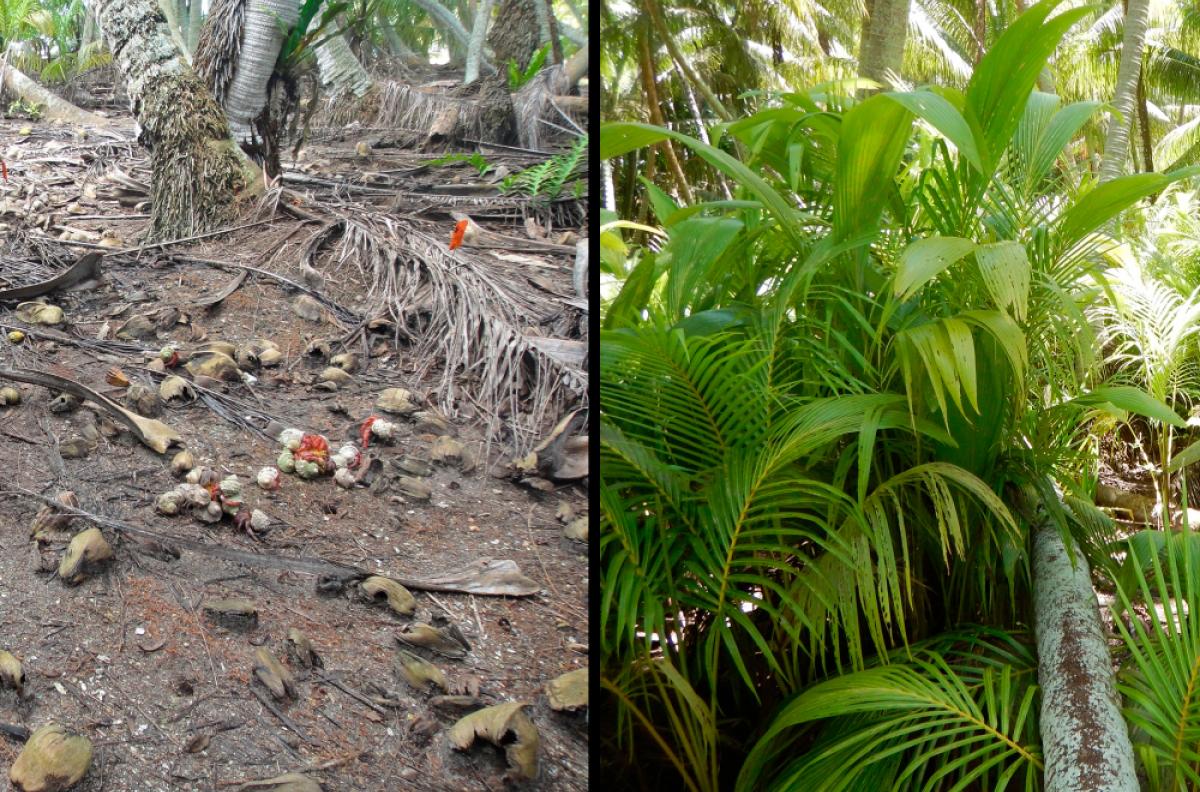
Palmyra understory around the time of rat eradication, left, and a couple years after eradication
When the atoll’s managers — the U.S. Fish and Wildlife Service, The Nature Conservancy and Island Conservation — were planning to conduct a rat eradication project, UC Santa Barbara community ecologist Hillary Young and her research group saw it as an unusual opportunity. They had already been visiting Palmyra regularly to track another non-native species — the coconut palm.
How would the vegetation respond to the eradication of the island’s main seed and seedling eater?
“Prior to the eradication, most of the understory of Palmyra was either bare ground — sandy soil or coral rubble — or covered in a carpet of ferns,” said Ana Miller-ter Kuile, a graduate student researcher in the Young Group and lead author of a study that appears in the journal Biotropica.
Eradication of the rats did result in a resurgence of vegetation on Palmyra. And not only that. The Asian tiger mosquito was wiped out, while two species of land crab emerged, adding to the atoll’s biodiversity.